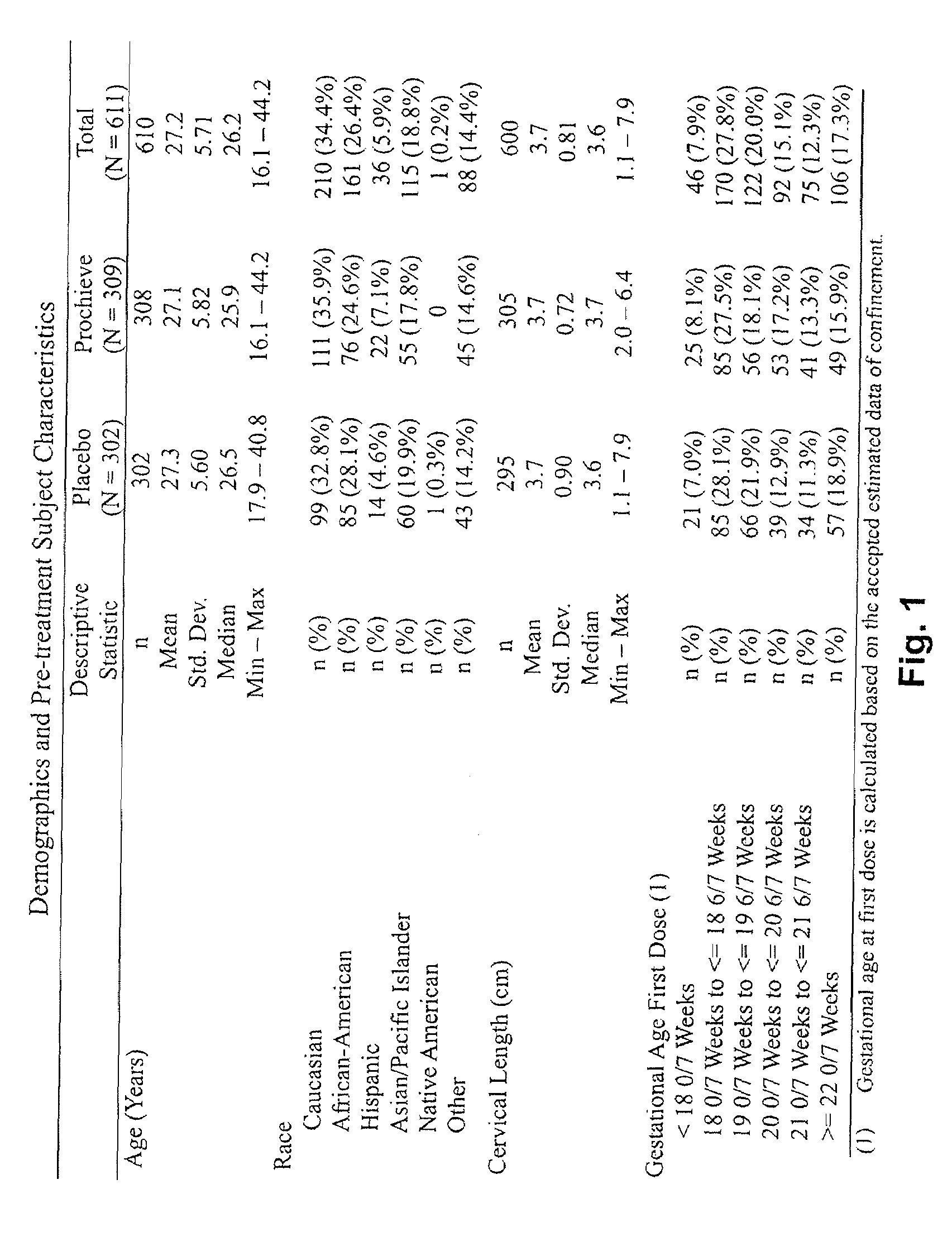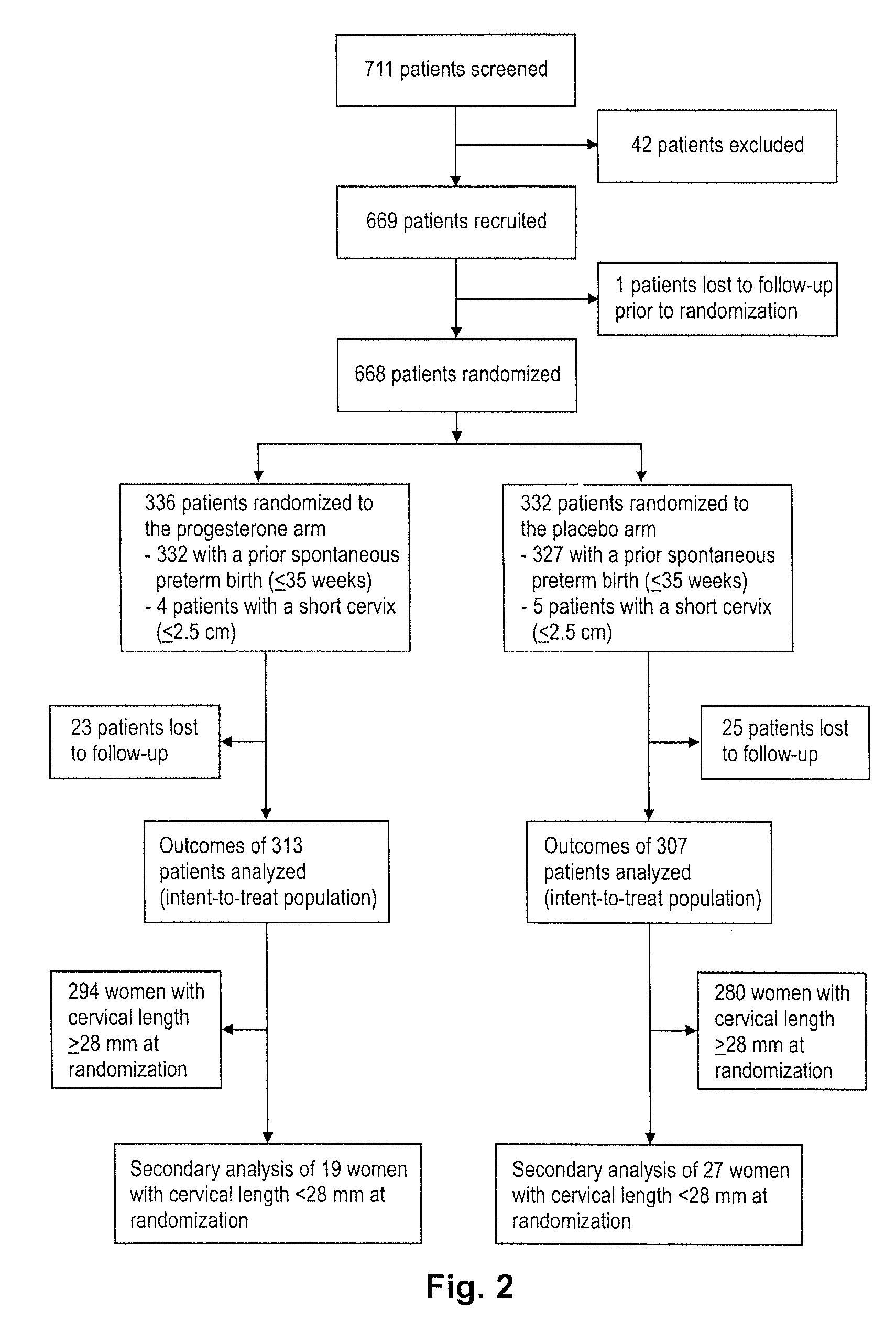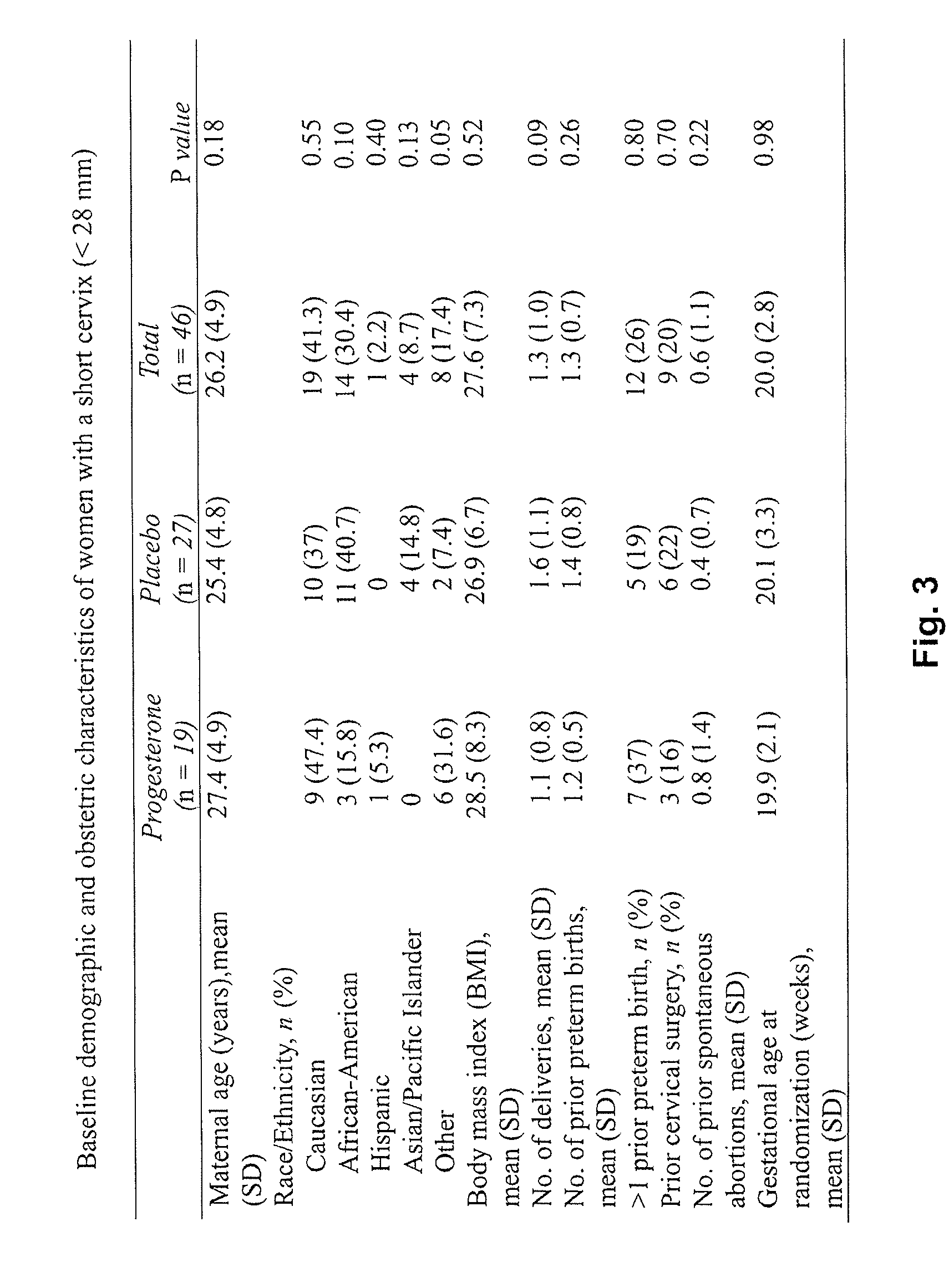Progesterone for the treatment or prevention of spontaneous preterm birth
a technology of preterm birth and progesterone, which is applied in the direction of sexual disorders, organic chemistry, drug compositions, etc., can solve the problems of high risk of morbidity and mortality, high care expenditure, and the 26 billion annual cost of premature birth in our nation's healthcare system, so as to reduce the shortening or effacing of the cervix of the pregnant woman, softening and dilating
- Summary
- Abstract
- Description
- Claims
- Application Information
AI Technical Summary
Benefits of technology
Problems solved by technology
Method used
Image
Examples
example 1a
A Randomized, Double Blind, Placebo Controlled Test of the Effects of Progesterone on Preterm Birth
[0064]In light of the state of the art, a study was conducted to examine the effects of progesterone on preterm labor and premature birth in women with a history of a previous preterm birth. The baseline data for the study is provided in FIG. 1. The participants in the study included 611 evaluable pregnant women, of which 308 were selected into a treatment group and 302 were selected into a placebo group. The selection, categorization, and breakdown of the two groups is outlined in the flow chart of FIG. 2. The study was a prospective, randomized, placebo-controlled, double-blind, multicenter trial in pregnant subjects at high risk of spontaneous preterm delivery. The study participants were screened from 16 0 / 7 and 22 6 / 7 weeks gestational age. Subjects were randomized to drug or placebo from 18 0 / 7 to 22 6 / 7 weeks.
[0065]Subjects meeting the study criteria were enrolled by the investi...
example 1b
Follow Up Regarding the Randomized, Double Blind, Placebo Controlled Test of the Effects of Progesterone on Preterm Birth
[0067]The data presented in this Example provides a further examination of the data presented in Example 1a. The objective of this trial was to determine whether prophylactic administration of vaginal progesterone reduces the risk of preterm birth in women with a history of spontaneous preterm birth.
[0068]This trial was randomized, double-blind, placebo-controlled, multinational trial enrolled and randomized 659 pregnant women with a history of spontaneous preterm birth alone. Between 18 0 / 7 and 22 6 / 7 weeks of gestation, patients were randomly assigned to once-daily treatment with either 8% progesterone vaginal gel or placebo until delivery, 37 weeks gestational age, or development of preterm rupture of membranes (PROM). The primary outcome was preterm birth at ≦32 weeks of gestation. Statistical analysis was based on the intent-to-treat principle.
[0069]Pregnant ...
example 2
Randomized Trial Investigating the Efficacy of Vaginal Progesterone to Prevent Early Preterm Birth in Women with a Shortened Cervix in the Midtrimester
[0081]The study further included women without a history of preterm birth and having a short cervix at the time of enrollment. Although the short cervix only population included 9 patients, the results suggested a possible effect of progesterone with 40% (2 / 5) delivering ≦32 weeks gestation on placebo and 0 (0 / 4) delivering ≦32 weeks gestation on progesterone. As some participants with a history of prior preterm birth also had a short cervix, the preterm birth study population was divided into quartiles based on cervical length. The lowest quartile (≦3.2 cm) was combined with the short cervix only patients and subdivided sequentially and the primary and secondary outcomes for women with cervical lengths of ≦3.0 cm and <2.8 cm at the time of enrollment were analyzed. There were an insufficient number of patients with even shorter cervi...
PUM
 Login to View More
Login to View More Abstract
Description
Claims
Application Information
 Login to View More
Login to View More - R&D
- Intellectual Property
- Life Sciences
- Materials
- Tech Scout
- Unparalleled Data Quality
- Higher Quality Content
- 60% Fewer Hallucinations
Browse by: Latest US Patents, China's latest patents, Technical Efficacy Thesaurus, Application Domain, Technology Topic, Popular Technical Reports.
© 2025 PatSnap. All rights reserved.Legal|Privacy policy|Modern Slavery Act Transparency Statement|Sitemap|About US| Contact US: help@patsnap.com



